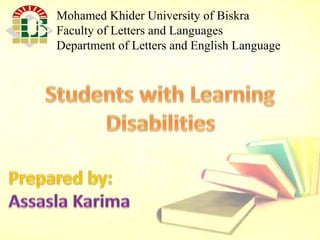Learning disabilities (LD) are specific learning problems that affect skills such as reading, writing, and reasoning, and vary among individuals. Causes of LD can include genetic factors, prenatal exposure to harmful substances, environmental toxins, and complications during pregnancy. Effective intervention and inclusive education practices are essential for supporting students with LD to ensure their academic success and social inclusion.


































































